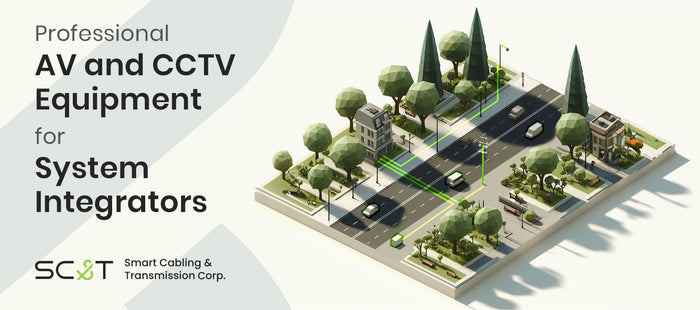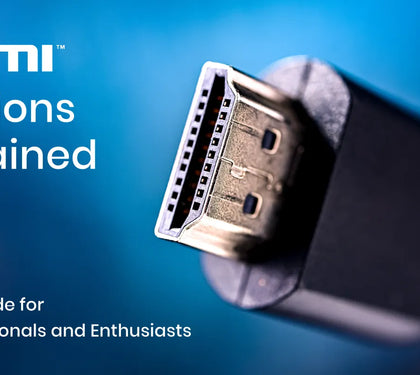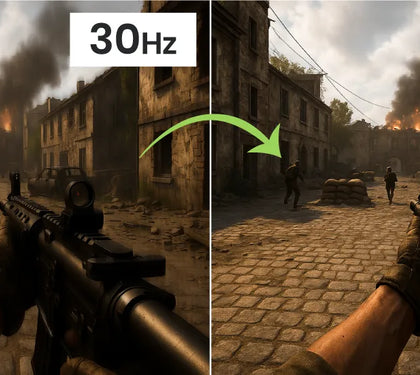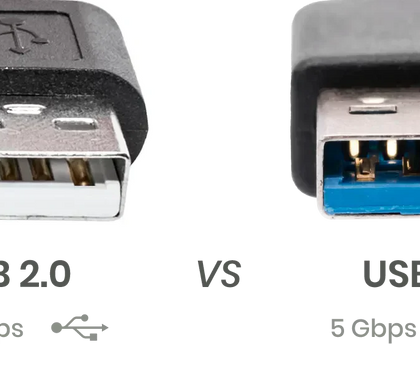Differences Between IP and PoE
What is PoE?
Internet Protocol (IP) and Power over Ethernet (PoE) are two fundamental technologies in network infrastructure. IP is responsible for the method by which data is transmitted over a network, utilizing unique addresses to identify devices. In contrast, PoE allows network cables to carry electrical power, eliminating the need for separate power supplies for devices such as cameras and access points.
While IP focuses on the logical addressing and routing of data, PoE offers a practical solution for powering devices, simplifying installation and reducing costs.

Key Considerations When Choosing an IP/PoE Extender
When selecting an IP/PoE extender, several factors should be taken into account:
1. IP or PoE Compatibility
Although IP and PoE specifications are generally downward compatible, IP surge protectors are incompatible with PoE devices. This is because PoE requires power transmission, which IP extenders can block. While this concept is relatively straightforward, it is often overlooked by users.

2. Bandwidth Selection
Another critical factor is bandwidth. The extender's bandwidth must exceed that of your network equipment. For instance, when using a 1Gbps switch with an extender supporting only 100Mbps, insufficient bandwidth of the extender will lead to unstable transmission, dropped frames, or even failure to transmit.

3. PoE Standards
PoE standards determine how much power can be transmitted through your network cable. To ensure your equipment functions correctly, you must pay attention to these standards when choosing a PoE extender. Below is the comparison table for PoE standards.
| PoE Standard | IEEE Standard | Max. Power Delivered (at PSE) |
Max. Power Delivered (at PD) |
Supported Cable Types |
Max. Cable Length |
Other Important Notes |
| PoE | 802.3af | 15.4 W | 12.95 W | Cat5, Cat5e, Cat6 | 100m (328 feet) | Supports 10/100 Mbps Ethernet |
| PoE+ | 802.3at | 30 W | 25.5 W | Cat5, Cat5e, Cat6, Cat6a | Supports 10/100/1000 Mbps Ethernet | |
| 4PPoE | 802.3bt Type 3 |
60 W | 51 W | Cat5e, Cat6, Cat6a, Cat7 | Utilizes all 4 pairs of wires, 10GBASE-T |
|
| 4PPoE | 802.3bt Type 4 |
100 W | 71.3 W | Cat5e, Cat6, Cat6a, Cat7 | Utilizes all 4 pairs of wires, 10GBASE-T |
Key Details
-
PSE: Power Sourcing Equipment (e.g., PoE switches, injectors).
-
PD: Powered Device (e.g., IP cameras, wireless access points).
-
Cable Requirements: While Cat5e is the minimum recommended cable type for higher power standards, Cat6 or better is preferred for improved performance and future-proofing.
-
Max. Cable Length: The maximum length for PoE cables is typically 100 meters, including 90 meters of horizontal cabling and 10 meters of patch cables.
-
Backward Compatibility: Newer standards (e.g., 802.3bt) are backward compatible with older standards (e.g., 802.3af and 802.3at).

4. Distance
Determine the required extension distance and select an extender capable of maintaining signal integrity over that range.
Already considering purchasing an IP or PoE extender? Explore SC&T's IP/PoE Extenders here
Applicable Devices for IP/PoE Extenders
IP/PoE extenders are versatile and can be used with various networked devices. Remember, if the device does not require PoE power, an IP extender alone will suffice. We’ve compiled a list of devices compatible with IP/PoE extenders, including:
-
IP/PoE Cameras: Ideal for extending the reach of security cameras in large buildings or across expansive areas.

-
Wireless Access Points (WAPs): Useful in extending Wi-Fi network coverage without additional cabling.

-
VoIP Phones: Power and connect phones in remote locations.

-
Network Routers and Switches: Facilitate flexible network design by placing these devices where power sources may not be available.

-
Large Office Printers and Multifunction Devices: Enable strategic placement of these devices throughout an office, even in locations far from power outlets.

-
Digital Signage and Kiosks: Simplify the installation and maintenance of digital signage and interactive kiosks in public spaces.

-
Access Control Systems: Power and connect door controllers, card readers, and other security devices in distributed locations.

-
Smart Lighting Systems: Allow flexible placement of smart lighting controls in large buildings, reducing the need for extensive electrical wiring.

(Image Source: SPI LED Ethernet controller 2 ports - Smart Lights)
-
Environmental Monitoring Systems: Connect sensors and monitoring devices via PoE extenders, ensuring operational reliability even in remote areas.
-
Point of Sale (POS) Systems: Ensure reliable network connectivity and power for POS systems without needing additional power outlets.

-
IP-based Intercom Systems: Extend the reach of IP-based intercom systems, widely used for communication and security purposes in buildings.

(Image Source: ITC-300 Digital Intercom System | Datavideo)
Common Issues Faced by IP/PoE Extender Users
We have identified some common issues that IP/PoE extender users might encounter:
Signal Degradation
-
Users may experience a drop in signal quality over extended distances. This issue, like latency, is related to bandwidth limitations. Specifications can often be found in supplier documentation or user manuals to help avoid these issues in advance. For instance, with SC&T IP/PoE extenders IP09 and IP09P (PoE version), the transmission rate is 100Mbps for distances up to 500m, and 10Mbps beyond 500m.

Latency
-
Increased latency due to signal processing in the extender can impact performance-sensitive applications like VoIP.
Power Insufficiency
-
Some extenders may fail to provide adequate power to multiple devices, especially when used with power-hungry equipment. Since PoE power decreases with distance, manufacturers familiar with system integration typically include tested data in the manual, enabling users and integrators to quickly determine the device’s operational limits.

Compatibility Issues
-
Mismatches between PoE standards can lead to non-functional setups. Therefore, ensure that your PoE equipment adheres to the relevant standards, such as af, at, or bt.
Overheating
-
Extenders placed in poorly ventilated areas may overheat, potentially leading to failure. Our equipment has been validated in projects and successfully installed in hot Asian traffic control boxes—provided the box has adequate ventilation.

Benefits of Using IP/PoE Extenders
IP/PoE extenders offer several advantages over traditional network setups:
-
Extended Network Reach: They allow devices to be placed farther from power sources, which is particularly beneficial in large or distributed environments.
-
Cost Savings: By eliminating the need for additional power cabling, they reduce both material and labor costs.
-
Simplified Installation: PoE extenders streamline the setup process, reducing the need for multiple outlets and power adapters.
-
Improved Network Flexibility: They enable dynamic network design, allowing for easy reconfiguration as needs evolve.
-
Enhanced Reliability: PoE extenders ensure consistent power delivery, reducing the risk of network downtime.
Compared to traditional setups requiring extensive switches and additional power sources, IP/PoE extenders provide a more efficient, scalable, and reliable solution. By incorporating these extenders, businesses and homeowners can enjoy a more versatile and resilient network infrastructure, ultimately leading to enhanced performance and reduced operational costs.
Frequently Asked Questions
Will there be compatibility issues?
Ensure that the bandwidth and signal type match your devices. As long as the device transmits network or TCP/IP signals and has sufficient bandwidth, it should work with an IP or PoE extender. However, some devices, such as projectors with HDBaseT interfaces, use different transmission technologies and chipsets despite having RJ45 ports. These cannot be used with IP or PoE extenders.

Is the extender waterproof for outdoor use?
For outdoor installations, users often ask about the risk of water ingress and how to protect their extenders from environmental factors such as rain, humidity, and temperature fluctuations. You can check the equipment's IP rating for waterproof and dustproof protection; typically, an IP66 rating or higher is required for outdoor use.
SC&T does not currently offer IP/PoE extenders with an IP66 rating for outdoor use.
Is there lightning protection?
Another common concern is the risk of power surges, especially in outdoor setups where lightning strikes could cause significant damage. Users often seek advice on protecting their network equipment from such risks, typically by using surge protectors. Our professional system integration equipment comes with built-in ESD protection. However, for added safety, especially with expensive equipment, you can install IP/PoE surge protectors to safeguard your devices from lightning strikes. Remember, surge protectors can also be damaged by lightning, so prompt replacement is necessary.
>>Explore Surge Protection Series now
>>Learn more about SC&T's IP/PoE Surge Protector Solution
Is the installation difficult?
Even with plug-and-play extenders, installation can sometimes be challenging, particularly for those unfamiliar with PoE systems. Users often express concerns about ensuring the correct setup and avoiding common pitfalls, such as incorrect connections or insufficient power supply. Generally, extenders have two ends labeled TR, which should not be reversed; if reversed, the transmission will not work.





